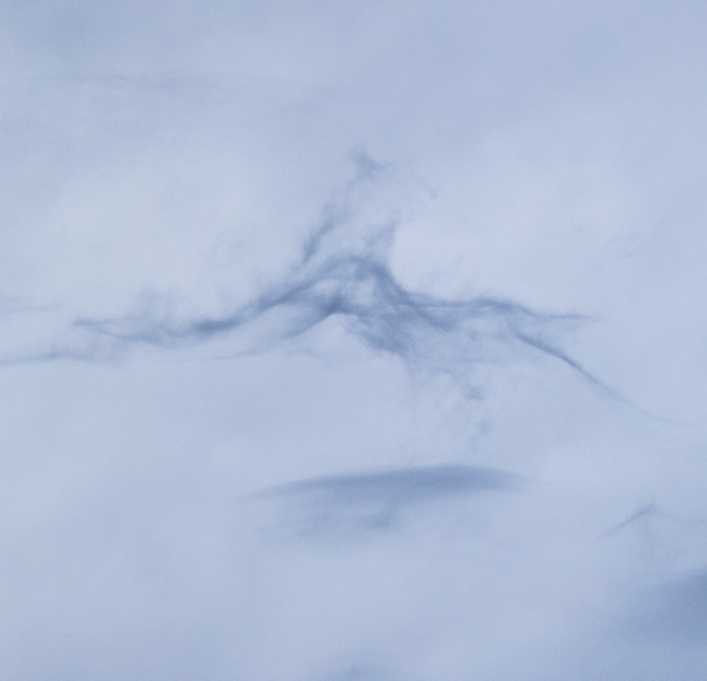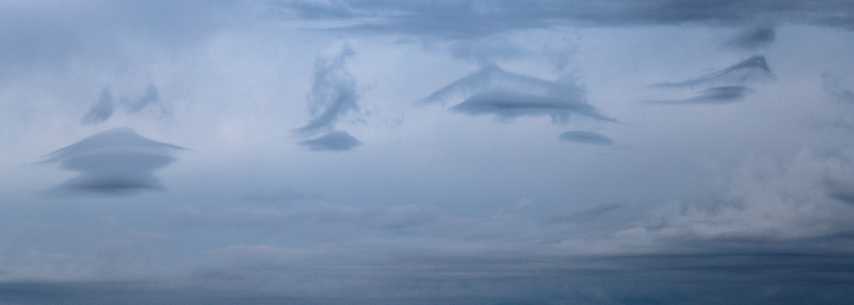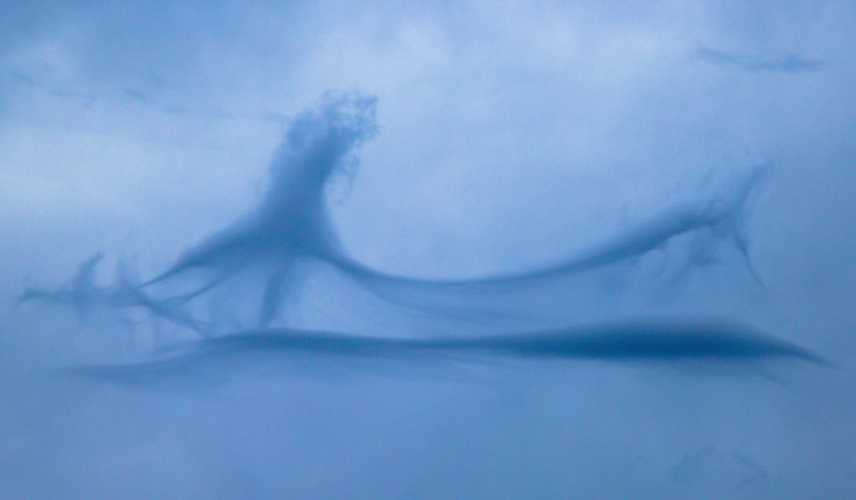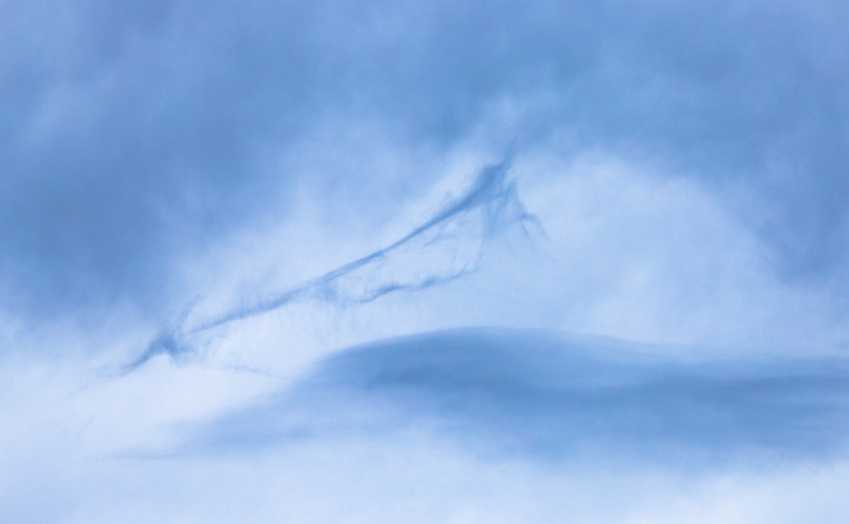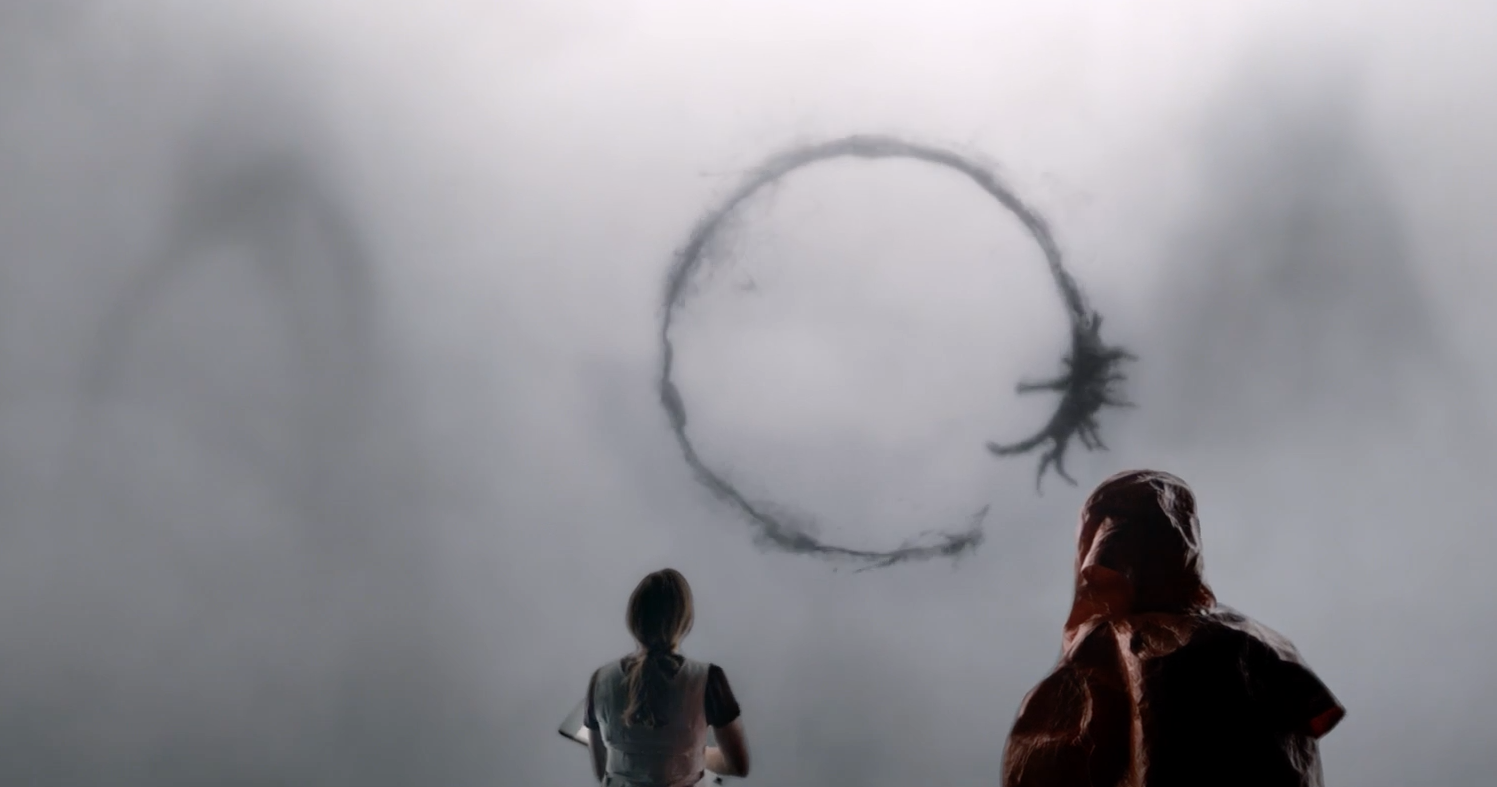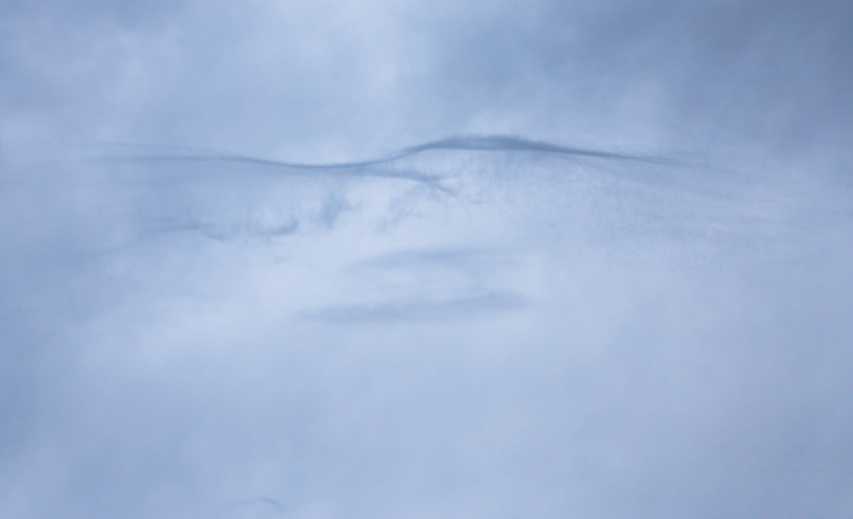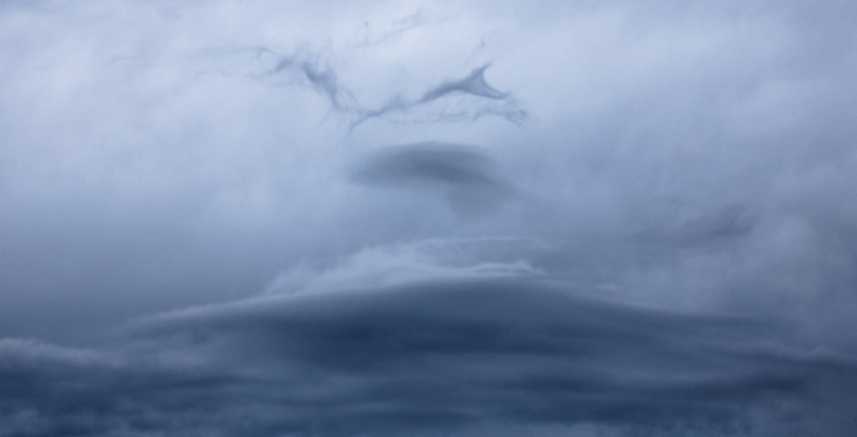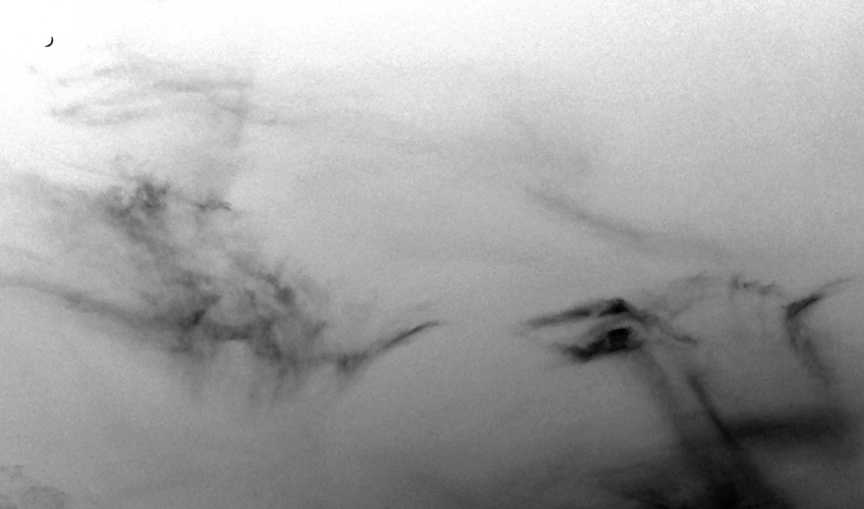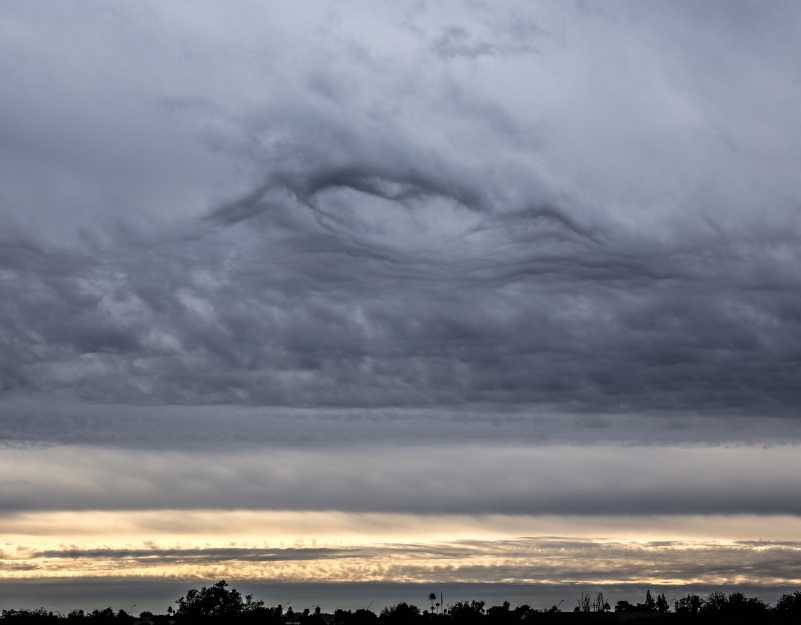Cloud Doodles
Forums › The Cloud Forum › Cloud Doodles
- This topic has 12 replies, 4 voices, and was last updated 8 years, 7 months ago by
 Michael Lerch.
Michael Lerch.
-
AuthorPosts
-
-
April 28, 2017 at 1:35 am #206577
 Michael LerchParticipant
Michael LerchParticipantHaunting Instabilities or.. Cloud Doodles





-
April 28, 2017 at 3:43 am #206586
 Patricia L KeelinParticipant
Patricia L KeelinParticipantFantastic, Michael! What a fun idea for a new forum topic. I’ll be looking out (and up!) for more Cloud Doodles. Do you want to say something about your process in creating these?
-
April 28, 2017 at 3:45 am #206587
 Kristy SharkeyParticipant
Kristy SharkeyParticipantWow, so interesting! These remind me of the alien writing in the movie, Arrival.

-
April 29, 2017 at 1:22 am #206911
 Michael LerchParticipant
Michael LerchParticipantK&K , Im glad you Enjoyed The Shots. Nothing very special about Photographing them except, being at the right place at the right time. A rather thick system moved over the Valley and I was able to spend some time with it a short distance from work. As things developed I noticed and photographed Holmboe Instabilities within the grasp of the zoom telephoto. Included were these ” sketches” of what was once a more substantial cloud, altocumulus stratisformus . Layers of wet of different temp and humidity try to find a equilibrium between the differing layers. In that process these doodles come and go rather quickly, so you have to keep your eye out for them and act quickly when spotted. As Usual the speed of the system made the shoot even more of a challenge. I Thought I would get some lenticular shots and instead I got Holmboe and these doodles. I’ll look, but I think through out the year I catch these kind of events only a couple times.
As mentioned the lighting was flat due to thick layers. So I shot with 1/4 to 1/2 F Stop over. I didn’t write it down, but I think I increased contrast by one increment in the pre program. You never know what you are going to get so be prepared to cover it all.

-
April 29, 2017 at 10:13 am #207051
 Hans StockerParticipant
Hans StockerParticipantCloud Doodles! A very applicable name you gave to these fine cloud/drawings, Michael. And it is nice to read about the circumstances you pictured these Doodles. Their forms are intriguing. I can´t help to think about the outlines of small asperitas formations. You write they are the remnants of Altocumulus stratiformis. Maybe there is some similarity in it?
The Holmboe´s are coming in little groups that seem to shadow each other. Great phenomenon!
-
April 29, 2017 at 2:37 pm #207094
 Michael LerchParticipant
Michael LerchParticipantHans Yes, areas of Asperitas were spotted during the event. The first shot above evokes thoughts of ..thinnest Asperitas ever..Well, Doodles have a comical element to them.
The shot below ,taken at the same event , shows the Wind shredding the clouds. Obviously the Sky instead of taking notes on the day’s lesson, doodled the whole page.
-
April 30, 2017 at 4:29 am #207257
 Kristy SharkeyParticipant
Kristy SharkeyParticipantMichael are these also in B&W or do I detect some color in there? Your asperitas shot is really nice, and the octopus is my favorite.
-
April 30, 2017 at 4:19 pm #207357
 Michael LerchParticipant
Michael LerchParticipantKristy..All are color shots. I am concerned about..that you have to ask. Have you calibrated Your computer screen?
I also saw your request for info on cameras, etc that we use to take pics of the clouds. I started with pocket cameras and evolved to my current Canon Full Size Sensor DSLR Model 6D. I have two lens for it; A 17mm to 40mm Wide angle zoom and a 28mm to 300mm telephoto zoom. A lot of lessons have been learned between the Pockets and DSLR.
The 1st thing you need to do is read up. There is a technical vocabulary you need to come to understand because that vocabulary will help guide you to make good decisions that lead to making
great photos of your favorite subject..Everything from Focal plane to Noise, to Moire’ etc etc etc you need to get a grasp of. The Web can inform you all the way up actual experience. So reading up is virtually free. Just Your time.Investing Money in to the hobby is abit of a gamble. It seems like every 6 months to a year the manufacturers come out with new and improved models. So any purchase is also a time stamp. As with any hobby, accessories have an allure all their own and can run up an impressive tab on their own. Decent Digital cameras run from 100 dollars to over 20,000 ..new. You mentioned renting; thats a good way to test for results. Buying Used or Refurbished is an alternate consideration.
Size does matter. The more ” bits” of info a chip can sense the finer the resolution. Resolution determines if the the clouds look fuzzy or if you can count the water droplets in each puff of a cumulus. Pixels are the unit of measure of the Sensors,,the CMOS Chip.. Think end product..Do you want 4inch x 5 inch or do you want 8×11 or 11×14 or larger? Sharp images at 11x 14 are beyond most pocket cameras and a real challenge for the 3/4 (APC) size sensors. And, the more you explore the hobby,,of course sooner or later you want to go to 11×14 or larger to hang on the wall.There are other factors besides resolution ,,like range. Between pure black and pure white..there is an infinite Range of any hue( red, yellow blue etc) but CMOS have only so much ability. Currently the Sony and Nikons use the same CMOSs that have more Range than the Canon CMOS’s. Its all in the How the CMOS is manufactured and the Sony chip is a better design. So what size and thus what quality do you want…to begin with or more lasting..and can afford . Sony just came out with a mirrorless full size digital camera..A lot less moving parts..asking price is over 4,000 dollars. Its for the pros apparently.
If I had to do it over again?..Because I have photographic experience from the Film days..I would go straight to a Full Size Digital Single Lens Reflex Camera that has at least a 20 mega pixel CMOS sensor. Must have all the current programmable options. I would make the investment in top quality lens. a Very very good lens will demonstrate that clouds are not fuzzy. You get what you pay for.
The other side is what are you going to use to process the pics you took..what software will you be using .?..Lots of vocabulary waiting for you there as well.. I highly recommend Adobe Light Room..end of discussion.
A Suggestion..Are you close to a community college? Yes..take a entry course in to photography. You learn vocabulary and tie it to shooting experiences. Also read up on Art ,the basics of Illustration etc.. But when its all said and done..You have to shoot. You have to force yourself to get out there and learn. 10,000 photographs a year is a doable expectation. I do that just with clouds and I live in an area that has 280 days year of Sunshine( no or little cloud)..Up at before sunrise and getting back to the car after its dark..and everything in between. Set yourself free into the clouds.
Hope this helps.
-
May 1, 2017 at 11:10 pm #207640
 Kristy SharkeyParticipant
Kristy SharkeyParticipantMichael,
These definitely have color but still come across as monochromatic, so I thought perhaps you were taking them in black and white and then filtering to make them look more blue. Remember I’ve been following all of the B&W posts, so seeing color from you is new to me! I guess I didn’t trust it, haha. I am viewing on an iMac so I’m my color quality is pretty good.
Really appreciate the details in your response regarding cloud photography, equipment and lenses. It helps a lot to figure out next investment and/or things to try out. I took a community college photography course about a year ago and started my photography journey with a Sony A6000 mirrorless plus Sony’s standard 16-50mm and zoom 55-210 kit lenses (e-mount). It has a 24.3 megapixel APS-C CMOS sensor and packs a lot of bang for the buck, at least compared to more sought after Canon/Nikon DSLR’s. It’s been a great starter camera and I may keep it forever for its portability. All this said, I’m at a point where I’m thinking about upgrading the camera body and/or lenses, and I definitely have a better sense of the gravity (and expense) of that decision now, so information collecting is very helpful.
I do think I’ll rent at least rent some higher end lenses and perhaps a higher end camera and shoot with it for a few days so I can experience the finer difference for myself. Now that I’ve been shooting for a while, I’m so very curious how many of those cumulus water droplets I can see. What brands of lenses do you use? Do you use your telephoto a lot for clouds? I was surprised at how much I find myself switching to a zoom lense.
Regarding software, thanks for the nudge. I have Adobe lightroom and still am using (terrible) iPhoto. I need to take the time to import and organize everything.
I used to live in Phoenix, the clouds and storms are sparse but when they come they are stunning. The storms are magnificent and the upside to desert / valley living is you can see the storms roll in from miles away. Seattle is a low, gray blanket most of the year, but we do get some fantastic variety when the nimbostratus go on vacation.
Thanks again for the very useful and detailed information, I sincerely appreciate it.
-
May 2, 2017 at 1:47 am #207663
 Michael LerchParticipant
Michael LerchParticipantKristy, You’re Welcome. The two lenses I have mentioned are Canon ” L ” lenses. IMHO using top of line lenses on a APS-C ( 3/4 size) is not getting the full potential of the lens.
True, a Telephoto lens will always out perform a Zoom Telephoto. Compromises have to be made since there is no perfect lens. A Zoom Telephoto is a very good compromise imho. 99.9% of the shots posted here at this CAS site by me in the last two years or so,,have been shot using the Full Size 6d Canon Body with the 28-300 Zoom Telephoto L Lens. I have not used the Sony or Nikon but, as mentioned , the Sony full size and Nikon full sized cameras come highly rated. I believe Nikon has a 28-300 tele zoom that is well rated, not sure tho. I have thought of making the switch to Nikon. My 6 d Canon is starting to show the wear and tare.
The idea of approaching cloud photography prepared for the ” anything can happen, and happens fast” heavily suggests a zoom telephoto. I like the 28 -300 because its starts at 28 which is a wide angle. The 300 side is about as far as one wants to reach due to all the things that stand between you and the object you’re trying to capture at 300mm.,as in atmosphere, ( but if a child’s face or a Still life on a table top etc, thats different). Compressing all that air does create problems. Most Zoom lenses have a ” sweet” spot. You learn where any lenses best zones are. Thats the thing about top of line lenses,,even if you’re not using the extremes of a Zoom..you can crop the picture and still get very high quality picture. You will Never regret investing in a top quality lens.
Read up is all I can suggest. Plenty of reviews both camera body and lenses..Renting b4 buying is smart. .And Do your self a BIG Favor..get that Adobe Lightroom downloaded yesterday. Its easy and quick to download and not much to organize,
Full Size CMOS Camera + Top Quality Lens + Adobe Lightroom or Photoshoppe= Digital Photography Fulfillment…imho..Oh!a good tripod is a wise investment also, essential for low light, movies, and spliced panoramas.
I spent two weeks in Seattle once. I saw the Sun for 1 and 1/2 days.
Have fun and am looking forward to see some pics from You!

-
May 2, 2017 at 5:11 pm #207800
 Kristy SharkeyParticipant
Kristy SharkeyParticipantThank you again! This has been a fruitful exchange, and I love this latest pic you uploaded. Haunting.
1.5 days of sun over two weeks…you are lucky! :)
-
May 2, 2017 at 11:49 pm #207889
 Patricia L KeelinParticipant
Patricia L KeelinParticipantThank you, Michael. As always, the your technical guidance and encouragement is greatly appreciated. To echo Kristy, my head was atilt as well wondering how you’d managed the intriguing color in your images. And when I foraged through my own small collection of photos, I could find nothing to match the fine gestural cloud studies you’ve offered here. Now I’ll be looking with even keener eyes to the skies.
The image below doesn’t have the light freeform feeling of those above, so I hope it is not too foreign to this thread’s focus. That said, it reminds me of the quick sketches I’ve seen art students do during lectures. I’ve shown it in both positive and negative here to help loosen my own eye, forever in training mode.
There is a tiny, bright sliver of moon in the upper left corner which gives this image its title in honor of a young Turkish friend whose name (Ayça) translates to “crescent moon”.
Ayça and Eye


-
May 4, 2017 at 4:39 am #208122
 Michael LerchParticipant
Michael LerchParticipantI’ve always liked Paul Klee’s work. I think He noticed the clouds. You’ve got the idea Keelin. If You open your mind to any possibility, the Clouds will provide.
The color on the above is manipulated for contrast. Slow and small increments of changing, is the key to working Adobe lightroom color. . Clarity, vibrancy and saturation do the general work along with contrast. You can spend time adjusting every hue if you want. Lots to get lost in. One neat feature is white balance..You know the yellow browns you get when shooting around approaching sun set? White Balance correction can get rid of the browns for whites and blues.
The picture below thought it was going to be a Mona Lisa but The Winds had a different idea.. Taken during the same event it shows a warmer atmosphere than those above. For contrast ,I manipulated the above forWhite balance. Its easy enough to learn. As in all digital..its just a matter of..click and dragging..After you get that right then punch it up with Clarity, Vibrancy Saturation etc. Color is like BW but a lot more consequential..No adjustment is free..Adjust one element and another reacts…For every adjustment there seems a opposite adjustment somewhere else. So I make slow and small incremental adjustments with color.

-
-
AuthorPosts
- You must be logged in to reply to this topic.


